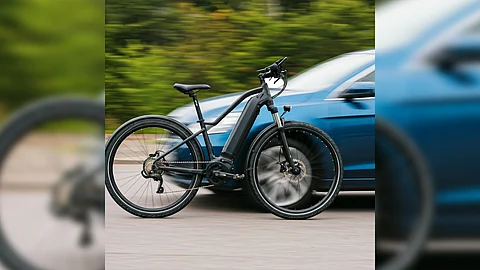
- NEWS
- the EDIT
- COMMENTARY
- BUSINESS
- LIFE
- SHOW
- ACTION
- GLOBAL GOALS
- SNAPS
- DYARYO TIRADA
- MORE

Dutch university researcher Holger Caesar heads out into the afternoon traffic on a bicycle like no other, equipped to collect data he believes may one day save lives.
His blue electric bike, kitted out with an array of laser sensors and scanners, speeds off among thousands of students pedalling home through the campus of the Delft University of Technology.
The campus of TU Delft is a warren of cycle paths — a perfect encapsulation of life in a country where bicycles outnumber people.
As Caesar cycles through Delft’s busy streets, his bicycle sweeps up data on range, direction and elevation of both moving and stationary objects — including cyclists, pedestrians and cars.
The aim is to build a three-dimensional picture of its surroundings and a better understanding of the way road users behave.
“We hope these datasets will have lots of applications in future,” he said, suggesting they could help cyclists avoid obstacles, build self-stabilizing bicycles or teach autonomous vehicles how to avoid hitting two-wheeled travelers.
“For cars it’s relatively simple... They go left. They go right. They go straight on. But it’s very hard to predict how cyclists are going to behave,” Caesar told AFP.
“You could, for instance, use the data to develop an application that alerts car drivers when a cyclist makes an unexpected move.”
Laser sensors
The “Delft SenseBike” itself would be at home in a science fiction film, equipped as it is with LiDAR sensors at the front and back.
LiDAR — “Light Detection And Ranging” technology — is commonly used in autonomous vehicles, which use the laser detection to create a three-dimensional image of their surroundings.
The infrared light rays emitted by the sensors bounce off surfaces and relay back information to “map” the area through which the SenseBike travels, including detecting moving objects like cyclists.
The data is processed using a labeling technique that associates everything visible in the images to a description of what it is — such as “tree,” “cyclist” and “traffic light.”
This technique should allow a car driver to recognise a “cyclist” when they see one and avoid a collision.
“The first step will be to make this data publicly available, so that academics and entrepreneurs can benefit from it,” Caesar said.
